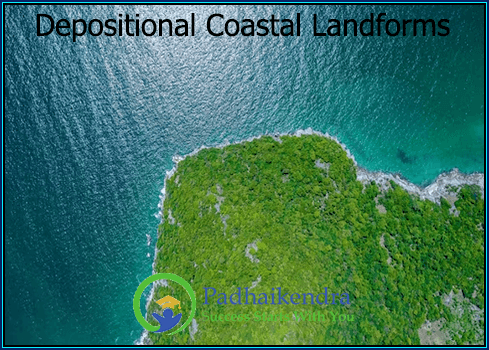Depositional coastal landforms are created by the deposition of sediment by the action of waves, tides, and currents along the coast. These landforms are often characterized by their gentle slopes, wide beaches, and long stretches of sand dunes.
Some of the most common depositional coastal landforms include:
- Beaches: Beaches are the most common depositional feature along the coast. They are formed by the deposition of sand and other sediments carried by waves and currents. Beaches can range from narrow strips of sand to wide expanses of sand and can be found along all types of coastlines.
- Sand Dunes: Sand dunes are mounds of sand that are formed by wind and waves. They are typically found on the backshore of beaches and can grow to be several meters high. Sand dunes are important habitats for a variety of plant and animal species and help to protect the coast from erosion.
- Spit: A spit is a narrow strip of sand or gravel that extends from the mainland out into the sea. They are formed by the deposition of sediment carried by longshore currents and are often shaped like a hook or a curve. Spits can create sheltered bays and lagoons behind them.
- Barrier Islands: Barrier islands are long, narrow, low-lying islands that run parallel to the coast. They are formed by the deposition of sediment by longshore currents and are often separated from the mainland by a lagoon or a bay. Barrier islands protect the coast from waves and storms and provide important habitats for a variety of plant and animal species.
- Tombolo: A tombolo is a narrow strip of land that connects an island to the mainland or another island. They are formed by the deposition of sediment by waves and currents and are often shaped like a spit. Tombolos can create sheltered bays and lagoons behind them.
- Bay Barrier: A bay barrier is a ridge of sand or gravel that separates a bay from the open sea. They are formed by the deposition of sediment by waves and currents and are often formed parallel to the coast.
Overall, depositional coastal landforms are important features of coastal environments and play a key role in protecting the coast from erosion and providing habitats for a variety of plant and animal species.





